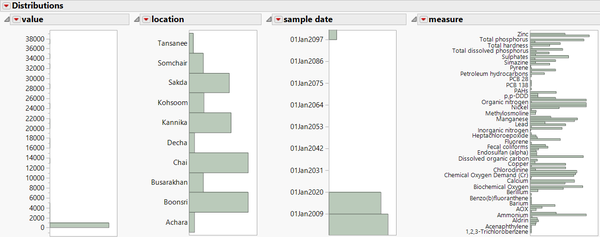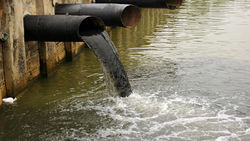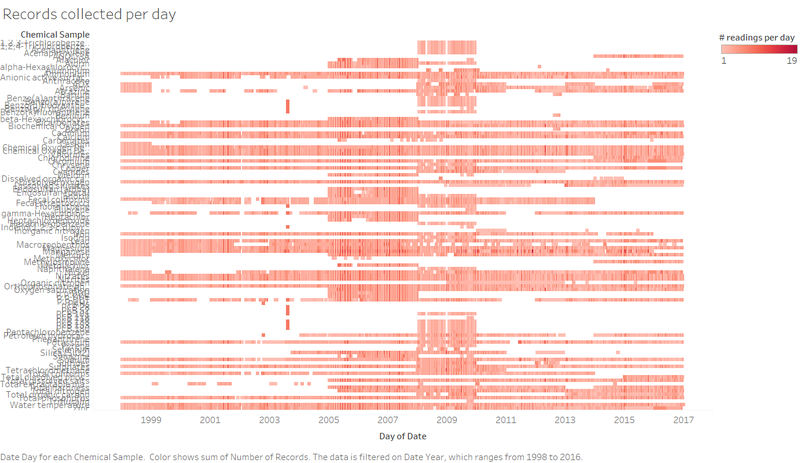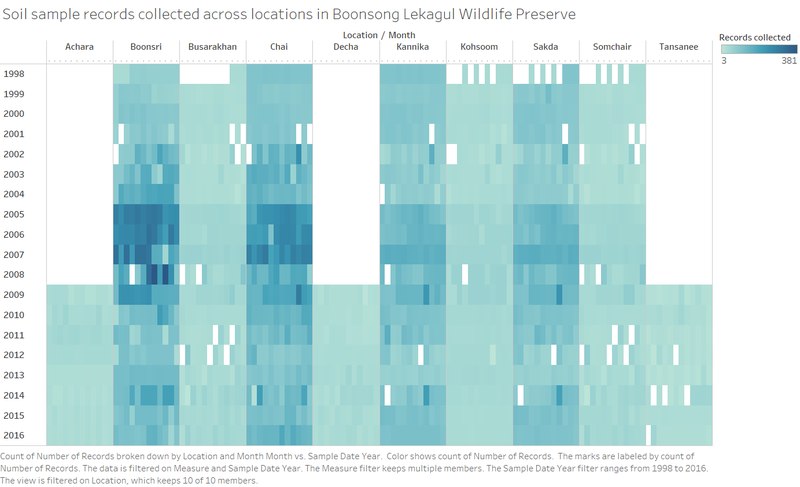Difference between revisions of "ISSS608 2017-18 T3 Assign Low Zhi Wei Methodology"
| Line 29: | Line 29: | ||
"> | "> | ||
==<font color = "#326569">Approach</font>== | ==<font color = "#326569">Approach</font>== | ||
| − | + | The approach to this exercise is captured in the flow below. Unlike in most typical data analysis undertakings, the data provided is relatively clean and requires no further cleaning. | |
| + | |||
| + | [[Image:ZW-Approach.PNG|200px]] | ||
| + | |||
| + | |||
| + | ===<font color = "#326569">Data Description</font>=== | ||
| + | To understand the data, high level review was conducted across the data as a whole and on each of the available variables. The table below summarises observations on the data as a whole as well as provided descriptive information on the data. | ||
| + | |||
| + | {| class="wikitable" style="background-color:#FFFFFF;" width="100%" | ||
| + | |- | ||
| + | ! Variable !! Description !! Observation / Structure | ||
| + | |- | ||
| + | | Id | ||
| + | || Identification number for the record (only for bookkeeping) | ||
| + | || 136824 unique records | ||
| + | |||
| + | |- | ||
| + | | Value | ||
| + | || Measured value for the chemical or property in this record | ||
| + | || Range from 0 to 37959.28 with a mean of 24.02 | ||
| + | |||
| + | |- | ||
| + | | Location | ||
| + | || Name of the location sample was taken from. See the map for geo-location of the sampling site. | ||
| + | || 10 different locations - Achara, Boonsri, Busarakhan, Chai, Decha, Kannika, Kohsoom, Sakda, Somchair, Tansanee. | ||
| + | |||
| + | |- | ||
| + | | Sample Date | ||
| + | || Date sample was taken from the location | ||
| + | || Range from Jan 1998 to Dec 2016 | ||
| + | |||
| + | |- | ||
| + | | Measure | ||
| + | || Chemicals (e.g., Sodium) or water properties (e.g., Water temperature) measured in the record | ||
| + | || Spans across 106 differing chemicals. 9700 records were noted with zero values. | ||
| + | |||
| + | |- | ||
| + | | Unit | ||
| + | || An additional field acting as reference on the measurement units used for different chemicals listed in the waterway readings | ||
| + | || Available in C, mg/l and µg/l. Out of the 106 chemicals, only Water Temperature is available in C, 39 chemicals are provided in mg/l, and 65 chemicals in µg/l. Macrozoobenthos is not listed with any type of measurement. | ||
| + | |} | ||
| + | |||
| + | For the purposes of analysis, only Value, Location, Sample Date, and Measure have been identified as useful. | ||
| + | |||
| + | ===<font color = "#326569">Data Exploration</font>=== | ||
| + | A basic distribution view is generated on the 4 key variables identified for analysis.<br> | ||
| + | [[Image:ZW-distribution.png|600 px]] | ||
| + | |||
| + | ====Value==== | ||
| + | This field represents the readings of samples collected. An overwhelming majority (99.5%) fall under 347 and below, while the maximum is at 37959.28. While it is noted that the values are represented on different scales according to the 'Unit' variable, normalisation is not recommended to rescale these values as chemicals naturally occur at widely different levels of amount in soil. | ||
| + | |||
| + | Taking the largest unit of mg/l and maximum value of 37959.28, the value translates to roughly 37.9grams per litre; this indicates the absence of abnormal or impossibly high data errors. | ||
| + | |||
| + | ====Location==== | ||
| + | From the table below, we see a wide disparity between the total number of readings collected at each location. This is disconcerting as it indicates a lack of consistency in collection of the chemical samples. | ||
| + | {| class="wikitable" | ||
| + | |- | ||
| + | ! Location !! No. of records | ||
| + | |- | ||
| + | | Achara|| 2855 | ||
| + | |- | ||
| + | | Boonsri|| 31314 | ||
| + | |- | ||
| + | | Busarakhan|| 7492 | ||
| + | |- | ||
| + | | Chai|| 31245 | ||
| + | |- | ||
| + | | Decha|| 2731 | ||
| + | |- | ||
| + | | Kannika|| 22152 | ||
| + | |- | ||
| + | | Kohsoom|| 7895 | ||
| + | |- | ||
| + | | Sakda|| 21429 | ||
| + | |- | ||
| + | | Somchair|| 7537 | ||
| + | |- | ||
| + | | Tansanee|| 2174 | ||
| + | |} | ||
| + | |||
| + | ====Dates==== | ||
| + | The dates do not reflect normally in JMP, whereby the year appears to be inflated. However, no further cleaning was performed on this field as it suitably reads and displays accurately in Tableau. | ||
| + | |||
| + | ====Measure==== | ||
| + | The distribution of measures show an even more astonishing disparity in readings between chemicals than the locations. As the data set does clearly show a sizeable amount of zero-value readings (9700), we cannot safely assume that the lack of readings for any particular chemical is due to it not being found in the soil samples. | ||
| + | |||
| + | Using a simple colour chart below, a daily view of the collected readings can be shown - at one glance, the records collected for each chemical on a daily basis is highly inconsistent, mostly hovering at just 1, and going as high as 19. This demonstrates a fatal flaw in the collection of the data from a statistical standpoint - insufficient resampling to support any significant observation or hypothesis. It is also not in line with common soil sample collection methodologies. | ||
| + | |||
| + | [[Image:ZW-Readings collected per day.png|800px]] | ||
| + | |||
| + | In addition, we can illustrate the number of records collected across all 10 locations and 19 years. From the chart below, it is clear that there were no records collected at 3 locations Achara, Decha, Tansanee for the years 1998-2008. We further note that Boonsri and Chai have an improportionate number of records collected from 2005-2008. Given these observations, it would be appropriate to only compare 2009-2016 data for consistency. | ||
| + | |||
| + | [[Image:ZW-Soil samples(FULL).png|800px]] | ||
==<font color = "#326569">Tools</font>== | ==<font color = "#326569">Tools</font>== | ||
placeholder | placeholder | ||
Revision as of 02:11, 7 July 2018
Contents
Approach
The approach to this exercise is captured in the flow below. Unlike in most typical data analysis undertakings, the data provided is relatively clean and requires no further cleaning.
Data Description
To understand the data, high level review was conducted across the data as a whole and on each of the available variables. The table below summarises observations on the data as a whole as well as provided descriptive information on the data.
| Variable | Description | Observation / Structure |
|---|---|---|
| Id | Identification number for the record (only for bookkeeping) | 136824 unique records |
| Value | Measured value for the chemical or property in this record | Range from 0 to 37959.28 with a mean of 24.02 |
| Location | Name of the location sample was taken from. See the map for geo-location of the sampling site. | 10 different locations - Achara, Boonsri, Busarakhan, Chai, Decha, Kannika, Kohsoom, Sakda, Somchair, Tansanee. |
| Sample Date | Date sample was taken from the location | Range from Jan 1998 to Dec 2016 |
| Measure | Chemicals (e.g., Sodium) or water properties (e.g., Water temperature) measured in the record | Spans across 106 differing chemicals. 9700 records were noted with zero values. |
| Unit | An additional field acting as reference on the measurement units used for different chemicals listed in the waterway readings | Available in C, mg/l and µg/l. Out of the 106 chemicals, only Water Temperature is available in C, 39 chemicals are provided in mg/l, and 65 chemicals in µg/l. Macrozoobenthos is not listed with any type of measurement. |
For the purposes of analysis, only Value, Location, Sample Date, and Measure have been identified as useful.
Data Exploration
A basic distribution view is generated on the 4 key variables identified for analysis.

Value
This field represents the readings of samples collected. An overwhelming majority (99.5%) fall under 347 and below, while the maximum is at 37959.28. While it is noted that the values are represented on different scales according to the 'Unit' variable, normalisation is not recommended to rescale these values as chemicals naturally occur at widely different levels of amount in soil.
Taking the largest unit of mg/l and maximum value of 37959.28, the value translates to roughly 37.9grams per litre; this indicates the absence of abnormal or impossibly high data errors.
Location
From the table below, we see a wide disparity between the total number of readings collected at each location. This is disconcerting as it indicates a lack of consistency in collection of the chemical samples.
| Location | No. of records |
|---|---|
| Achara | 2855 |
| Boonsri | 31314 |
| Busarakhan | 7492 |
| Chai | 31245 |
| Decha | 2731 |
| Kannika | 22152 |
| Kohsoom | 7895 |
| Sakda | 21429 |
| Somchair | 7537 |
| Tansanee | 2174 |
Dates
The dates do not reflect normally in JMP, whereby the year appears to be inflated. However, no further cleaning was performed on this field as it suitably reads and displays accurately in Tableau.
Measure
The distribution of measures show an even more astonishing disparity in readings between chemicals than the locations. As the data set does clearly show a sizeable amount of zero-value readings (9700), we cannot safely assume that the lack of readings for any particular chemical is due to it not being found in the soil samples.
Using a simple colour chart below, a daily view of the collected readings can be shown - at one glance, the records collected for each chemical on a daily basis is highly inconsistent, mostly hovering at just 1, and going as high as 19. This demonstrates a fatal flaw in the collection of the data from a statistical standpoint - insufficient resampling to support any significant observation or hypothesis. It is also not in line with common soil sample collection methodologies.
In addition, we can illustrate the number of records collected across all 10 locations and 19 years. From the chart below, it is clear that there were no records collected at 3 locations Achara, Decha, Tansanee for the years 1998-2008. We further note that Boonsri and Chai have an improportionate number of records collected from 2005-2008. Given these observations, it would be appropriate to only compare 2009-2016 data for consistency.
Tools
placeholder



